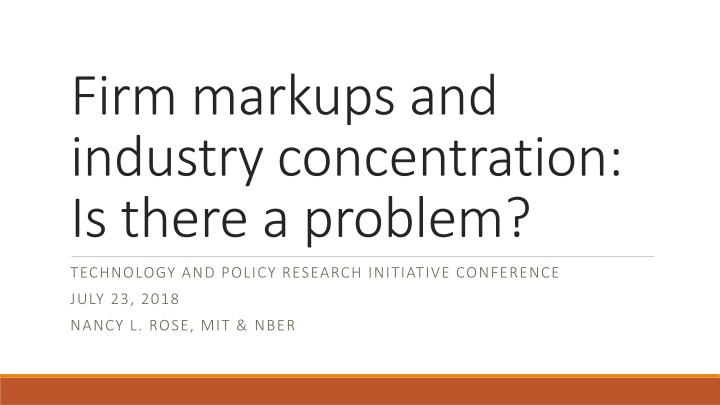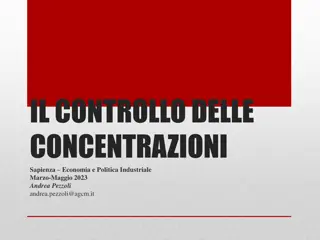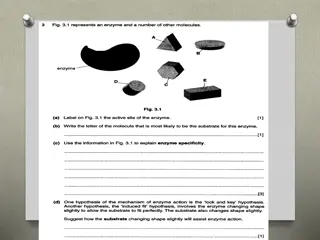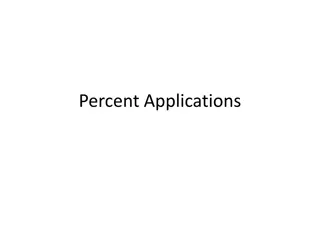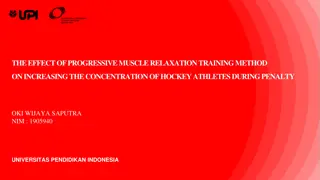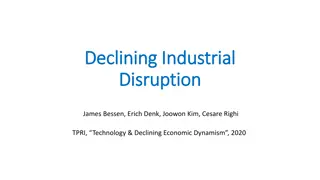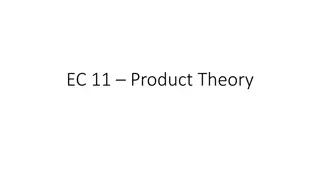Firm Markups and Industry Concentration: A Closer Look
Innovative papers presented at the Technology and Policy Research Initiative Conference discussing rising markups, intangible capital, IT impact on concentration trends, and EU's unique position. The debate on concentration trends, industry definitions, and market dynamics is explored, emphasizing the importance of competition and mechanisms in policymaking.
Download Presentation

Please find below an Image/Link to download the presentation.
The content on the website is provided AS IS for your information and personal use only. It may not be sold, licensed, or shared on other websites without obtaining consent from the author.If you encounter any issues during the download, it is possible that the publisher has removed the file from their server.
You are allowed to download the files provided on this website for personal or commercial use, subject to the condition that they are used lawfully. All files are the property of their respective owners.
The content on the website is provided AS IS for your information and personal use only. It may not be sold, licensed, or shared on other websites without obtaining consent from the author.
E N D
Presentation Transcript
Firm markups and industry concentration: Is there a problem? TECHNOLOGY AND POLICY RESEARCH INITIATIVE CONFERENCE JULY 23, 2018 NANCY L. ROSE, MIT & NBER
Overview Innovative set of papers that inform the debate: 1. Patterns of rising markups across OECD countries, industries, and firms, highest for the top firms in the most digitally-intensive sectors (Calligaris, Criscuolo, Marcolin) 2. The role of intangible capital in understanding investment and productivity trends (in retail, Crouzet and Eberly) 3. Especially the impact of specialized IT (embodied human capital?) may have in generating important trends in concentration, firm scale, superstar firms, and margins 4. Why these trends may be less strong in the EU, due to greater political independence of EC competition enforcers (Gutierrez and Philippon)
My takeaways: These papers contribute important insights to the debate And in the case of GP, raise provocative hypotheses As do many of the subsequent papers we will see today We need to work hard to establish 1. The basic facts, especially at relevant units of observation 2. A link to competition as opposed to bigness 3. Mechanisms Why? Because implications and mechanisms matter LOTS for policy
Concentration trends What do we mean by concentration ? Industrial organization: Market share distribution among competitors for consumers Concentration debate: Size distribution of firms in aggregated industries (e.g. 3-digit NAICS) Crouzet and Eberly, Fig 1, 3-digit NAICS Gutierrez & Philippon, Fig 1, KLEMS industries
Whats an industry? Example: KLEMS: 10-12 Food products, beverages and tobacco / NAICS 3-digit: 311: Food Manufacturing What s in this industry ? 311111: Dog and Cat Food Manufacturing 311230: Breakfast Cereal Manufacturing 31135: Chocolate and Confectionery Manufacturing 311511: Fluid Milk Manufacturing 31161: Animal Slaughtering and Processing 3117: Seafood Product Preparation and Packaging 311942: Spice and Extract Manufacturing Neither rivals for most consumers nor likely similar in production
Whats a market? Geography matters. See airlines Azar et al. JoF, forthcoming, Fig 1. Average route level HHI, MHHI (common ownership)
In most cases, we cant just add across firms Firms typically compete in many product markets with different rivals and competitive conditions DowDuPont (2017 merger) plans split into 3 companies: Agricultural, Materials Science, and Specialty Products. Even these are not markets/products. Materials Science: Plastics, Materials and Chemicals, Infrastructure and Consumer Solutions And often in many geographies Using Compustat or other firm-level data to assign firm revenue to a sector tells us little about what is happening at the market level
Margins and profits Hal described difficulties in measuring margins Crouzet/Eberly & Bessen papers work to unpack productivity C-E highlight the role of intangibles Growth of intangible capital correlated with labor revenue productivity May reflect omitted variables (IT, brand K, etc.) Also M&A activity (market power?) Bessen highlights the role of proprietary IT Returns to scale in IT specialization and from IT specialization
Gutierrez & Philippon: How EU Markets Became More Competitive Not sure what facts we have to explain, but focus on the theory In addition to above, concern about measuring enforcement (see cartels) Political Economy story of greater independence in EU to preclude captured regulators/enforcers from favoring one country s industry BUT how is the model of European nations v. EU logically distinguished from US states v. Federal government? Especially at inception of antitrust policy in US (Sherman 1890)? Perhaps the paper is focused on the wrong institutional difference? Will argue from anecdote, with apologies, from my 2.5 years at DOJ
A view from the trenches: What might we be missing? Judicial oversight and burden of proof Especially relevant for mergers US enforcers can t block mergers or stop conduct without a trial to convince a federal judge US economists, Chicago School lawyers, and judges have ratcheted up proof burdens Main cost of trial loss for enforcers is not reputation, but bad precedent (e.g. Amex, potential for ATT/TW appeal) Asymmetry with EC no effective appeal path in mergers And abuse of dominant position has much lower burden then Sec 2. Facts and causes drive effective responses, particularly for academic economists
